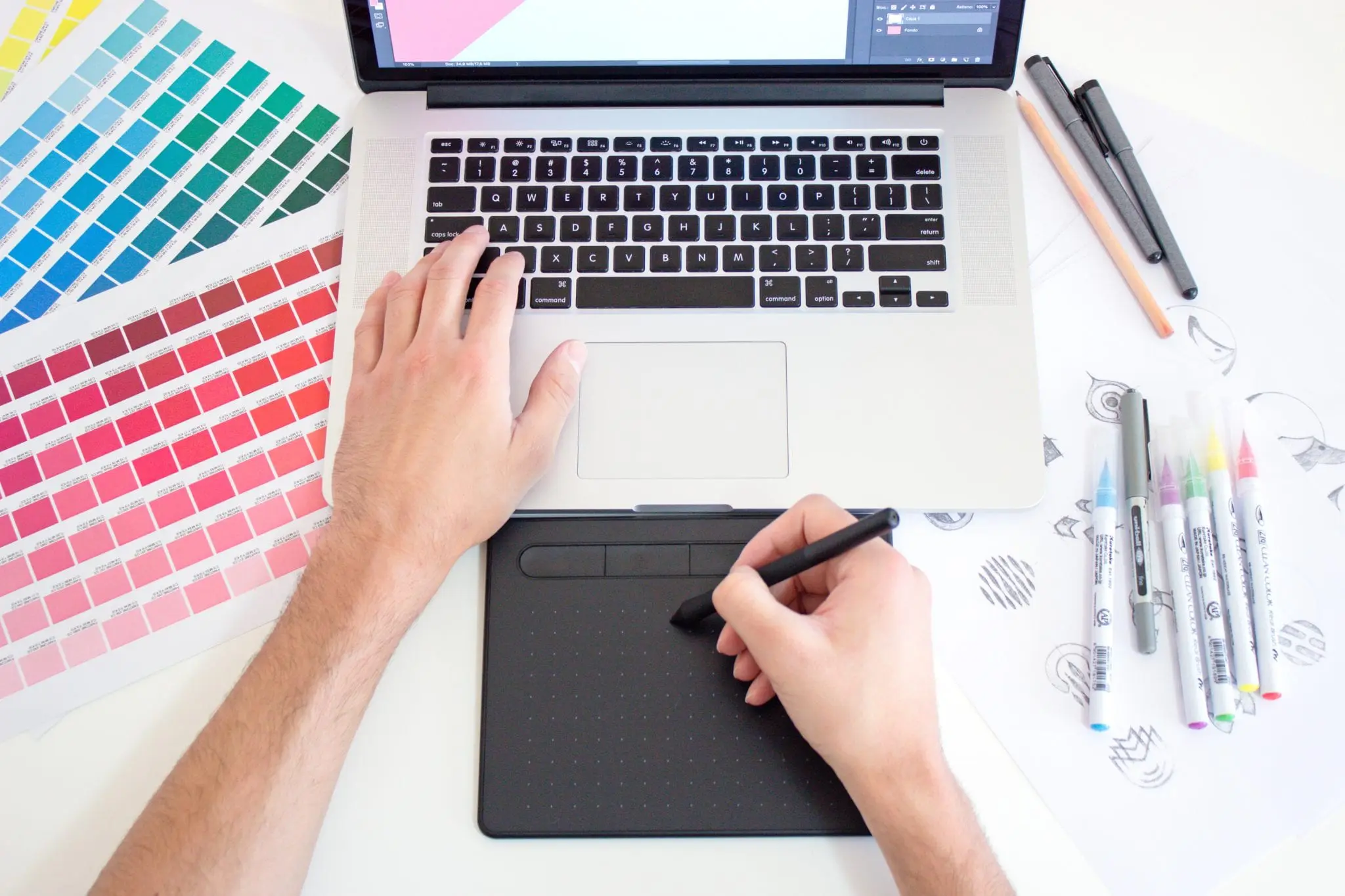As Public Relations professionals, we know that producing a well-crafted message for our clients goes beyond artfully weaving words together. The presentation of your message is an equally important aspect of any communications strategy. Think of your message as a culinary dish. You can have a delicious, juicy message, but no one will want to digest it after it’s slopped down on a grimy plate. Here at 4media group, we use our capabilities in graphic design to ensure our clients’ messages more palatable to your target audience. Whether developing a media kit, an infographic, a web page or branding, graphic design is a versatile and useful tool for elevating your content.
So, what makes for attention-grabbing content?
We recently sat down with our in-house graphic designer, Rachel Goodman, to get a clearer perspective on how graphic design helps clients achieve their communication campaign goals. Rachel has had the opportunity to work on a wide array of design projects throughout her years in the industries, leading to valuable and diverse experiences. “On any given PR campaign for a business, the ask could be anything from branded infographics, posters, signage, brochures, content and even brand development. Basically, they come to us with a request and we find a way to create a unique piece that blends seamlessly with their current branding, values, culture and sometimes takes it in a new direction entirely.”
An important part of any public relations campaign is to ensure that the clients’ target audience notices their content. Target audiences might be general members of the public or media gatekeepers such as journalists, but they have one thing in common—they’re people, and people have short attention spans. The average American has an average attention span of around eight seconds; however, readers’ attention span increased after visuals were added to the mix. This increases the likelihood that the journalist reading your press release, media kit or media advisory will stay engaged enough to potentially assimilate the key messaging into their published content. Likewise, a healthy use of visuals will keep readers engaged and enveloped in your content.
Now, you’ve decided to use visual elements in your content. The next step will be effectively incorporating these visuals with your content. Design elements such as color, vectors, arrangement are vital to the final product. Fonts and positioning of text is another design aspect to be aware of. For example, too many font styles in one piece result in an excessive mess. Limit your color palette to a select few colors in all materials for a campaign. This helps to ensure consistency and harmony throughout the entirety of the campaign.
Plan your pallet
Goodman weighed in with common mistakes to avoid when working in design. “Limit your color palette. Color is great, but no one wants their landing page to look like a class of preschoolers went wild at art time,” says Goodman. Another aspect of color use is to consider the platform you’re using to present your message. Print and web have a different color specification. “Color mode is important, so be mindful of the type of project you’re working on.
The rule of thumb is: Print equals CMYK (cyan, magenta, yellow and black), Web/screen equals RGB (red, green and blue),” adds Goodman.
Get creative
Good graphic design should help add clarity to your content. For instance, presenting data can be challenging due to heavy use of statistics and numbers. Many readers may find this content daunting to read through but fear not. We have learned to embrace graphic design as a tool to add flare. We’ve found infographics to be perfect for presenting number-heavy stats.
We at 4media group work with clients from all-types of industries who each have a unique set of goals to achieve. Many times, graphic design is an important component to the look and feel of their brand. Consistent branding using an official set of style guidelines establishes standards enforcing consistent branding. An exceptional graphic designer should do this. Goodman explains, “Respect the branding. If your client gives you branding parameters, you can’t just ignore them and design what you think looks good. A good client knows what works for them and if the piece you deliver doesn’t look like it comes from their brand, they will rightly reject it. Even if you think their branding is truly obscene, going in a completely different direction is never a good idea.” For those without a concrete design style, graphic designers are helpful for developing a formal style guideline to use for years to come.
4media group has extensive expertise working with clients to design branding-specific content or drafting an entire image overhaul for clients looking to refresh their organization’s image. To learn more about how 4media group can help provide a solution to your design challenges, contact us!
